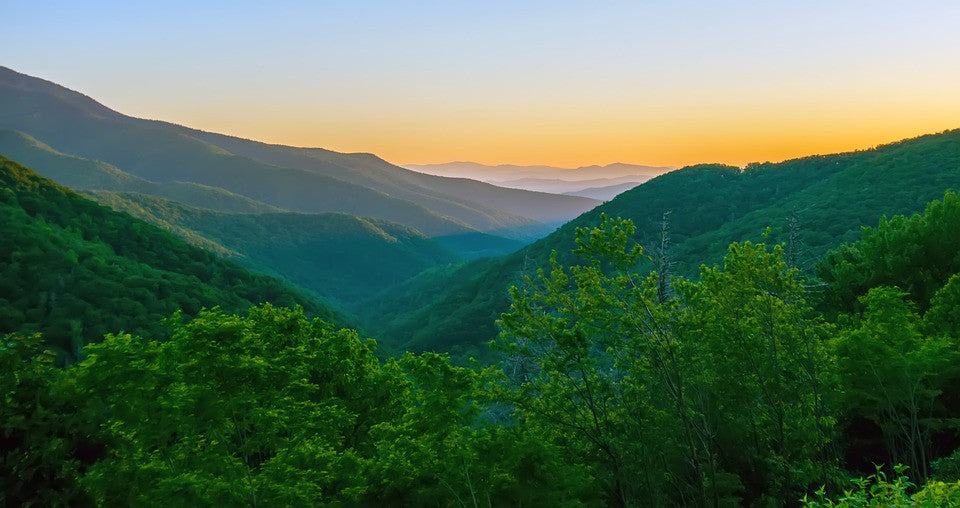Rusty Air in Caronlina - Orchestra Version
$ 40.00
For orchestra and electronica - Proceed to purchase if you would like to buy a study score.
Conductor's Score and Performance Parts for RENTAL ONLY. Please send an email to info@aphramusic.com to request a rental application form.
Approximate Duration: 12'
PROGRAM NOTES
The memories are still vivid from a long-past summer in Brevard, North Carolina — where I spent several months at the music festival there as a teenager. Not only did the thick buzzing of cicadas and katydids always accompany the concerts there, but sometimes it was the music itself: on more than one occasion, I remember sitting on the porch of 100-year old Nan Burt and listening to the sounds of summer while she told stories from her long life. This venerable lady was introduced to me by the assistant conductor at the festival, Robert Moody, who would commission my first orchestral work. The work thus opens with "Nan's Porch," in which three orchestral clouds — each inhabiting a different harmony, register, and orchestration — hover in the heavy air, and they ultimately begin to meld together when the cicadas start their singing.
The climax of this movement sends us into “Katydid Country,” when the ambience of the first movement evolves into a bluesy, rhythmic tune. The clicks of the katydids become a beat track over which the orchestra riffs on a simple tune inspired by old-time blues. Soaring in the strings over the last breaths of the blues tune, a long-lined melody moves us into "Southern Midnight." The three distinct textures from the opening return, but now each is brought to life by a phrase of the melody. The hot, Southern dawn that follows is, both sparkling and heavy, with the air made rusty again by the buzzing cicadas (popularly called locusts). The bluesy tune begins to creep back into the middle register, while above and below figuration buzzes about in different tonalities.
INSTRUMENTATION
2 flutes (2nd doubling piccolo)
2 oboes (2nd doubling English Horn)
2 Bb clarinets (2nd doubling bass clarinet)
2 bassoons (2nd doubling contrabassoon)
4 horns in F
3 C trumpets (mutes: straight, harmon, solotone)
2 tenor trombones (mutes: straight, harmon)
bass trombone
tuba
electronica (see performance notes)
percussion (3 players):
1: marimba, hi hat, splash, bowed crotale
2: vibraphone, tam tams (low, medium & high)
3: sus. cymbals (very high, medium, low), glock, bass drum, xylophone,
timpani, log drum
harp
piano
strings
PERFORMANCE NOTES
All that is needed is a laptop, two speakers, placed on the left and right sides of the stage, and a few onstage monitors. Included with the rental of the materials is a download link for a simple software sampler that triggers the sounds from the laptop (an additional percussionist or an assistant conductor simply hits laptop keys at rehearsal numbers). The electronic component is simple, inexpensive, and designed to work within a compressed orchestral rehearsal period, and a 'live' version of the electronic part can be realized when the composer is present.
REVIEW
“Mason Bates is one of the young lions among today's tunesmiths. And the CSO upheld his glowing reputation with their inspired rendition of his Rusty Air in Carolina. It ingeniously evoked just about any sensory aspect of a muggy Carolina summer night you can name. “Its recorded natural night-noises were layered over shimmering, ambient orchestral textures. The sounds of assorted insects and other night creatures also came from the instruments ó several of which produced strange, sputtering sonorities I'd never heard before. The composer was present, both to introduce the work and to run the electronics. “And the near-capacity crowd loved it. This piece should be required listening for those poor, misguided classical fans who think that great music ended with yesteryear's dead Europeans. It was eloquent proof that today's best composers can indeed take open-eared listeners to wonderful new places. “ —Lindsay Koob (Charleston City Paper)




